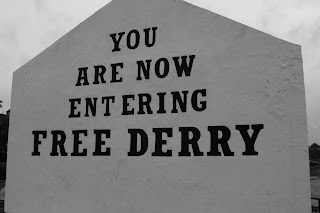I had a lot more luck with my recipes this time around, due to a little gem of a cookbook that I came across called An Indian Housewife's Recipe Book (Laxmi Khurana, 1985). Although the book doesn't have any pictures, which is something I generally prefer, it makes up for this with really clear and straightforward recipes. I put together the three dishes mentioned in the title of this blog post and I was really happy with the results.
The Ingredients
Living in a big, multicultural city like London, it's easy to find the ingredients you need to make proper Indian food. I appreciate that some ingredients, like Moong Dhal or gram flour might be harder to find in places where there isn't a South Asian diaspora.
For the Moong Dhal
200g of split Moong Dhal - मूग - (muga)
1 onion - कांदा - (kanda)
Some jeera (cumin seeds)- जिरे - (jire)
Some rai (black mustard seeds, although I used brown)- मोहरी बिया - (mohari biya)
Fresh garlic - लसूण - (lasuna)
2 tomatoes - टोमॅटो - (tometo)
Turmeric powder - हळद - (halada)
Garam Masala - गरम मसाला - (garam masala)
Chilli powder - तिखट - (tikhata)
Fresh dhaniya (coriander) - धणा - (dhana)
For the Bombay Potato Curry
 |
| The ingredients for all three dishes were very similar |
500g potatoes - बटाटा - (batata)
Some jeera (cumin seeds)- जिरे - (jire)
Some rai (black mustard seeds)- मोहरी बिया - (mohari biya)
Turmeric powder - हळद - (halada)
Chilli powder - तिखट - (tikhata)
Fresh dhaniya (coriander) - धणा - (dhana)
2 tomatoes - टोमॅटो - (tometo)
For the Pakoras
The original recipe was for potato pakoras - but I just happened to have a courgette that I wanted to use, so I did courgette pakoras instead. Not sure if that's typically Indian, but they were really tasty!
170g besan (gram) flour - हरभरा-पीठ - (harabhara pitha)
1 courgette - आयताकृत्ती भोपळा - (ayatakrtti bhopala - literally 'oblong pumpkin')
Garlic powder - लसूण पावडर - (lasuna pavadara)
Chilli powder - तिखट - (tikhata)
Garam Masala - गरम मसाला - (garam masala)
Turmeric powder - हळद - (halada)
How I made Moong Dhal
I started with the Moong Dhal, as this is the bit that takes longest to prepare. Dhal is basically lentils and there are many different types used in Indian cooking - I thought it might be fun to make Moong Dhal, as I'm not sure that I had ever tasted Moong before.
 |
| Washing the Dhal |
Although the dhal we buy in the West comes in packets and has usually been machine-cleaned - it's still important to wash the dhal thoroughly to remove any dust or other particles that might be clinging to the individual lentils. I did this by soaking the dhal for a few minutes in water - once the water had turned yellow, I removed the dhal with a spoon and emptied the pot.
I then put the dhal in a sieve, over the pot and washed it six or seven times until the water was pretty much running clear. I cleaned out the pot, added the Moong dhal and chopped onion, covered with water and cooked for around half an hour, stirring every now and then. It surprised me that the dhal soaked up the water very quickly and I had to be careful not to burn the mixture, or let it stick to the bottom of the pot.
 |
| Cook the Dhal with chopped onion |
I fried the tomatoes and spices in a small pan and added these to the dhal when it had completely soaked up the water.
 |
| Spicy tomato mix when is later added to the Dhal |
 |
| Dhal mixed with tomato and spices |
How I made Bombay Potato Curry
I realise that there are a lot of people in Maharashtra, particularly in Mumbai, who eat meat - my favourite Parsi dish is a good example, as this contains chicken - however, in keeping with my earlier blog post on vegetarianism, I wanted to make a vegetable curry, feeling this would be a more authentic choice for a dish from Maharashtra.
 |
| Chopped potatoes with fried cumin and mustard seeds |
 |
| Potato curry with tomato and spices |
 |
| Cooking the potato curry, Moong Dhal and spicy tomato mixture |
How I made Pakoras
Making Pakoras was more of a challenge for me, as it involves creating a sticky mixture with the gram flour and spices - applying this sticky paste to whichever vegetable you want to cook (the vegetable should be cut into fairly thin slices) and then deep-fat frying the vegetable slices in hot oil. It reminded me a bit of the time I made Jersey wonders, as it was a similar concept, basically deep-fat frying bread.
 |
| Mix the gram flour with the spices and add water to make a paste |
 |
| Add sliced courgette to the mixture |
 |
| Make sure the courgette pieces are covered in the sticky flour and spice paste |
Once you get the hang of it, it's dead easy and I can definitely see myself making a whole range of pakoras in future - the possibilities seem endless, potato, carrot, broccoli . . .
 |
| Deep-fry the courgettes in a pot of hot oil |
 |
| Courgette pakoras |
I served all three dishes together, with some pre-baked naan bread that I heated up in the oven - I used the fresh coriander leaves to top off the meal and you can see the results for yourself in the photos below.
 |
| My Indian dinner! |
 |
| Pakoras, Moong Dhal and Bombay potato curry with naan |
Image credits:
All photos were taken by me, please feel free to reuse, under the Creative Commons license:
Attribution (especially to this blog post)
Share alike
Non-commercial







